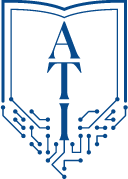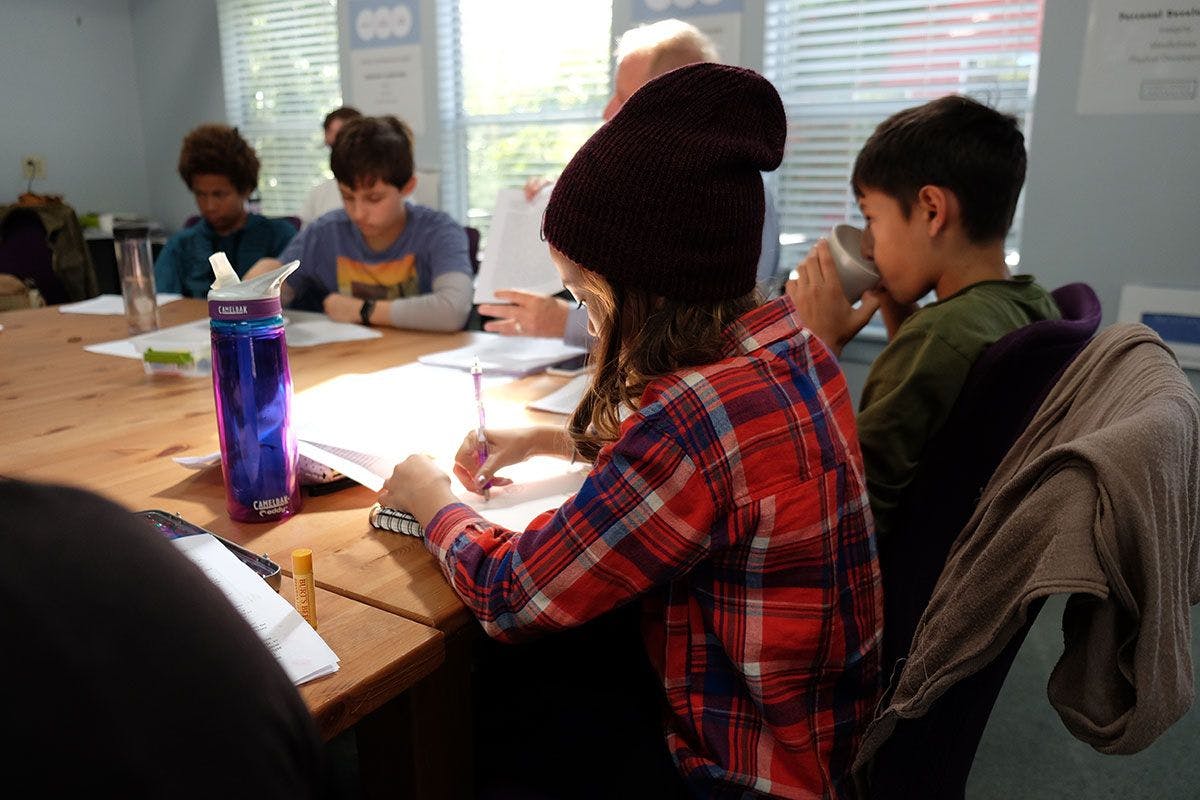How do grades work at ATI?
At ATI, we believe that assessment is and should be primarily for the purpose of helping students learn. That requires a few elements: first, it should help students identify learning targets - offering clear, objective goalposts. And secondly, it provides students the agency to understand their own progress along that path.
Why do assessments (in lieu of grades)?
What is mastery-based assessment?
Mastery-based learning is a teaching and assessment method that is based on students’ ability to SHOW their knowledge and skills. In a traditional educational model, students move from unit to unit, grade to grade, based mostly on having spent the right amount of time in the classroom. Mastery-based learning requires three core elements:
Mastery-based learning is growing rapidly in popularity, in part due to an increasing body of research showing that traditional points-based grading “undermines learning and creativity, rewards cheating, damages students’ peer relationships and trust in their teachers, encourages students to avoid challenging work, and teaches students to value grades over knowledge.”
At the beginning of each unit, students review the learning objectives- specific statements of the knowledge and skills they will need to master and demonstrate. Throughout the unit, they read, study, and practice in order to create work that can be judged as “evidence of mastery.”
What kinds of things do students master?
Students at ATI accumulate evidence of two types of learning. First, they master the objectives of each of their courses. These are specific, targeted descriptions of learning. In a literature course, they may be asked to identify theme in a novel and defend their choice using textual evidence. In math, they may be asked to graph a differential equation. They will then take their understanding into the real world – crafting their own stories that have a strong theme or solving real world problems using skills gained in math class. The objectives are defined: the mechanism for achieving and demonstrating mastery is open to choice!
Students also work towards mastery credits. These are the big-picture learning targets that students will achieve by the end of their time in middle or high school, and are the culmination and reward of the work and learning achieved over years. While a history course may ask students to demonstrate their understanding of the causes and effects of the American revolution, the mastery credits ask students to demonstrate “logical reasoning” more generally. Students can use evidence from coursework, or from their own independent pursuits and projects, to demonstrate to the world and themselves that they are capable of this skill. The result is that every student graduates from ATI with a portfolio of work that can stand as a physical, beautiful testament to their effort and their achievements: a reminder that they can create excellent work, set and meet difficult goals, and – importantly - that they themselves are capable of judging their own work and determining its worth.
The role of feedback in mastery-based assessment
In a traditional system, “assessment” often stops at “grades,” which is an incomplete measure of an individual’s potential or trajectory. At ATI, our focus is on learning - and the goal of our assessment system is to promote learning and encourage a growth mindset. That means we value feedback in all its forms. Our goal is to emphasize the possibility of growth. We believe in the potential of every student, and we know that with individualized support and choice, they can achieve more. A culture of feedback emphasizes for students that growth is possible- that it is, in fact, the default state.
What’s a rubric, and why does it matter?
Peer and self-assessment are vitally important, but how does a 7th grade student know what good work looks like? Sometimes it’s obvious: in this beautiful video, a teacher describes a group of young children helping one of their peers to draw a butterfly. They are able to provide feedback because the standard - the definition of mastery - is obvious to them: the actual photograph of the butterfly their friend is trying to draw. But as the objectives become more advanced, a student does not obviously know either how to give good feedback, or potentially even what the standard of excellence might look like. Teaching this process is a key part of building a culture of mastery!
One tool towards building a student’s internal editor is by using a quality rubric. This is a scale that helps students understand the elements of good work. A writing rubric, for example, might give a student clear standards on grammar, paragraph structure, or language choice. A rubric for evaluating science journal work might include precision, use of a straight edge to create graphs, and completeness of responses. By applying the rubric to their own own, a student is able to edit and improve without reference to the adult. In Montessori terms, we call this a “control of error.” With modeling and practice, students can edit and improve their own work.
Do students at ATI take tests?
Sometimes! There’s nothing wrong with a test, per-se. The question is WHY a test is being used. If a test is a “check for understanding,” it can be a great tool for both student and guide to identify areas of confusion and need for further work. We emphasize that a test is just one piece of data, amongst many, that can help a student develop that internal sense of their own understanding.
Don’t colleges need to see grades?
We work with the Mastery Transcript Consortium (MTC), a growing network of public and private schools using mastery-based learning. This organization helps us craft transcripts that are as unique as our students: showing, not telling, with work samples and narrative comments, as well as a description of the specific objectives the student mastered in order to gain credit for the course. While we can translate our transcript into grades if required, more and more schools are moving towards a mastery-based transcript, and colleges are moving with the times. These transcripts provide a much deeper and more detailed picture of an applicant than a points-based GPA.
Do students get a transcript when they graduate?
Yes they do! Students graduate with a transcript from Mastery Transcript Consortium, which displays the names of all classes they took at ATI and a narrative description of their performance. With more than 300 member schools, MTC transcripts help graduates get into top colleges, pursue careers in a wide variety of fields, and demonstrate their achievements in a clear and tangible way. ATI students also graduate with a portfolio, a book of work that shows their mastery of the coursework and more. The portfolio shows the work- projects, writing, artwork, science, research, and more- that a student has created over their years in school. It is a visible and powerful repository of evidence of each student’s unique strengths. In addition to including course work, the portfolio is an opportunity for students to showcase evidence of work done in pursuit of independent projects and interests: from research, to entrepreneurship, to creative arts and more.
How do I know if my child is doing well in school?
This is a common question: being able to see a GPA and know that your child is getting A's feels like a very straight forward and reassuring way to know that your child is doing well. In a mastery-based system, how can you tell if your child is succeeding? There are a number of answers to this question:
And ultimately: ask them about their work. The progress reports, conferences, and transcripts will hopefully show you what your child will tell you: that they are proud of their work; that they are learning and improving; and that they are gaining skills and knowledge that are already leading to success in real-world endeavors.

